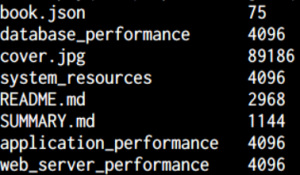Let’s talk about how you can format strings in ruby.
Why would you want to format a string? Well, you may want to do things like have a leading zero even if the number is under 10 (example: 01, 02, 03…), or have some console output nicely formatted in columns.
In other languages you can use the printf function to format strings, and if you have ever used C you are probably familiar with that. To use printf you have to define a list of format specifiers and a list of variables or values.
Getting Started with Ruby String Formatting
While sprintf is also available in ruby, in this post we will use a more idiomatic way (the community style guide doesn’t seem to agree thought).
Here is an example:
|
|
time = 5 message = "Processing of the data has finished in %d seconds" % [time] puts message |
Output => "Processing of the data has finished in 5 seconds"
In this example, %d is the format specifier (here is a list of available specifiers) and time is the variable we want formated. A %d format will give us whole numbers only.
If we want to display floating point numbers we need to use %f. We can specify the number of decimal places we want like this: %0.2f.
The 2 here indicates that we want to keep only two decimal places.
Here is an example:
|
|
score = 78.5431 puts "The average is %0.2f" % [score] |
Output => The average is 78.54
Remember that the number will be rounded up. For example, if I used 78.549 in the last example, it would have printed 78.55.
Converting and Padding
You can convert a decimal number and print it as hexadecimal. Using the %x format:
|
|
puts "122 in HEX is %x" % [122] |
Output => 122 in HEX is 7a
To pad a string:
Use this format for padding a number with as many 0’s as you want: %0<number of zeros>d
|
|
puts "The number is %04d" % [20] |
Output => The number is 0020
You can also use this ruby string format trick to create aligned columns of text. Replace the 0 with a dash to get this effect:

Alternatively, you can use the .ljust and .rjust methods from the String class to do the same.
Example:
|
|
names_with_ages = [["john", 20], ["peter", 30], ["david", 40], ["angel", 24]] names_with_ages.each { |name, age| puts name.ljust(10) + age.to_s } # Prints the following table john 20 david 30 peter 40 angel 24 |
Conclusion
As you have seen ruby & rails string formatting is really easy, it all comes down to understanding the different format specificiers available to you.
I hope you enjoyed this fast trip into the world of output formatting! If you did don’t forget to subscribe to my newsletter using the form below so I can send you more great content 🙂

